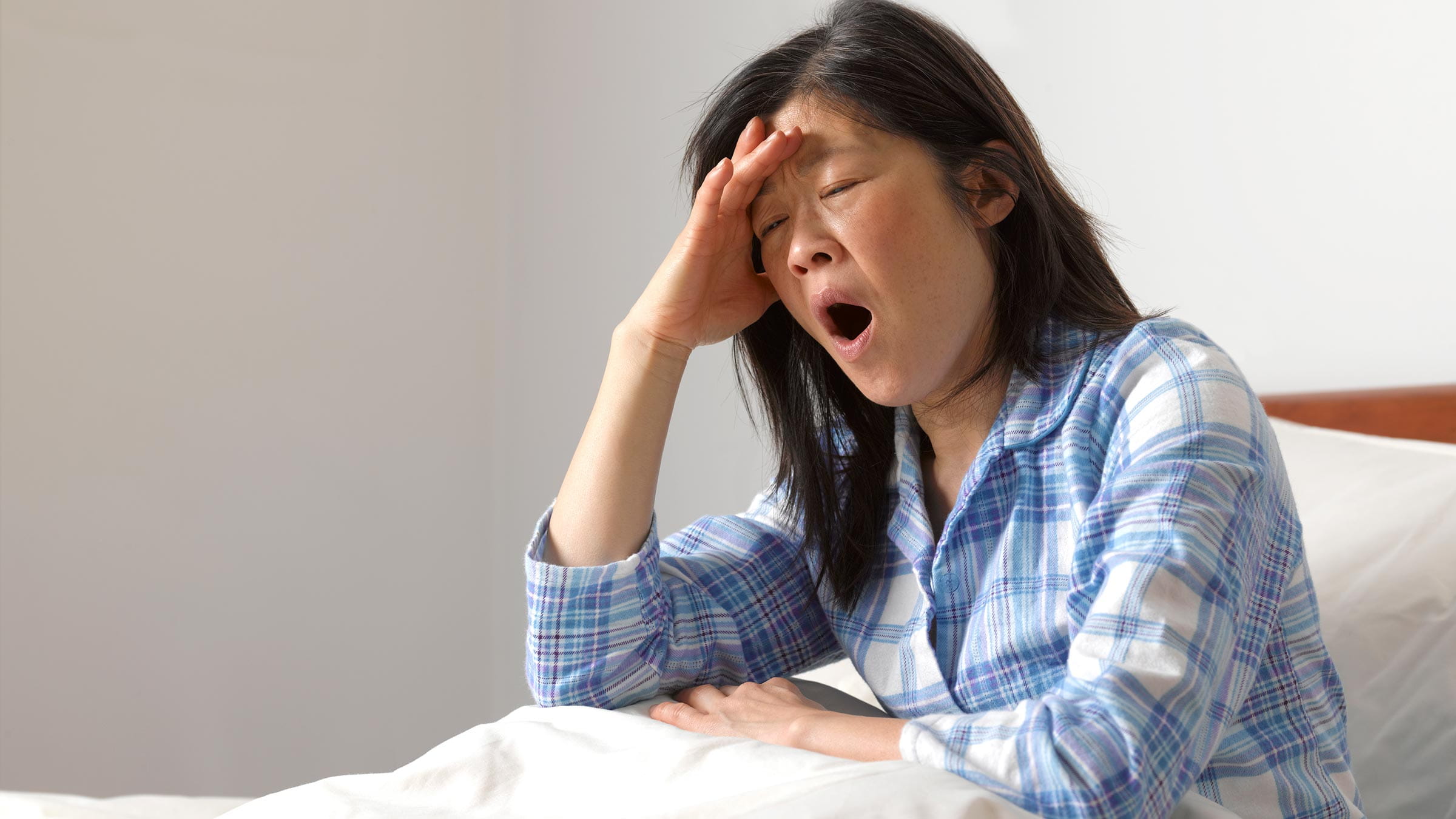What’s the best way to treat obstructive sleep apnea? And how to adjust when your methods aren’t working

That loud snoring you do every night may be a sign of a serious medical problem.
If you wake up abruptly several times a night, feel tired in the morning, have daytime sleepiness, or attention problems during the day, it might be time to seek professional help.
The potential cause of these symptoms is known as obstructive sleep apnea — when your airway intermittently closes, usually behind your tongue and soft palate — while you sleep. The closures can lead to brief arousals from sleep and drops in oxygen which puts stress on your heart.
Obstructive sleep apnea is concerning because if left untreated, it has been associated with health issues such as high blood pressure, heart attacks, strokes, and memory or cognitive issues. The most effective treatment for obstructive sleep apnea is continuous positive airway pressure, or CPAP.
How CPAP works
If they’re prescribed CPAP, patients wear a mask that attaches to a machine with a hose. When they turn the machine on, it blows air through the nose (like a vacuum in reverse), which acts as a pneumatic splint to open the airway during sleep. A CPAP doesn’t add any oxygen. It takes air from the room and blows it in at a higher pressure to keep the airway open.
There are different masks that are available to wear. Some are full-face, covering the nose and the mouth. Others are placed just under or over the nose.
CPAP therapy has been shown to resolve snoring, improve sleep quality and boost energy levels. Using CPAP can reduce your blood pressure as well.
Data shows that when compared to all types of treatments, it’s the one that most effectively reduces airway closures or narrowings. These closers and narrowings are measured by the apnea hyponea index, which is the number of apneas (airway closures) and hypopneas (airway narrowings that cause arousals or drops in oxygen) that occur per hour of sleep.
What to try before skipping the CPAP
While CPAP is a highly effective treatment, only about 50% of patients are able to use it nightly.
Issues using CPAP can include discomfort with the mask, leaks, dryness and feeling suffocated by air.
People often have a hard time getting used to the mask. Sometimes, when they try different masks, they can find one that works for them.
Dryness can be improved by using the humidifier that comes with your CPAP.
But some people, despite trying different masks, and using the humidifier just can't get comfortable. Sometimes the air blowing is difficult for them.
Try gradually adjusting to the CPAP
For some people, it's just difficult to get used to sleeping with something on their face. Some people have claustrophobia or anxiety — tolerating something on their face during sleep isn’t feasible for them.
Every effort is made to find a way to make the CPAP work for them. Sometimes people can undergo desensitization, which is a stepwise approach to using CPAP.
For example, instead of using the CPAP all night from the start, try a gradual approach. Begin by wearing the mask while awake. Then sleep with the mask for a few nights without the machine. Next, add the machine but leave it off. Finally, turn on the machine and incrementally get used to it.
Ask for help if you’re having issues with your CPAP
Quickly contact your sleep medicine doctor or the medical equipment company who's supplying you to try different masks. The nasal masks are probably the most comfortable for most people, but some do tolerate full face masks better.
Even if you tend to breathe through your mouth, it is still possible to use a nasal mask. With the assistance of the machine, your airway can open, allowing you to keep your mouth closed.
The sooner you get help with these issues, the more successful you'll be. The longer you try to struggle with it without asking anyone for help, the less likely you’ll be able to get used to it.
Sleep apnea without CPAP
Oral appliance
A mandibular repositioning device, custom-made by a dentist, moves the lower jaw forward to keep the airway open during sleep. This prevents snoring and improves sleep quality. A sleep study is conducted to check its effectiveness.
The oral appliance is mainly indicated for mild to moderate obstructive sleep apnea. It may not be as effective as CPAP, but if someone is having trouble using the CPAP at all, an oral appliance might be a good alternative.
Side effects can include jaw pain and changes your bite over time. There are devices the dentist can provide to push your jaw back in the morning to decease the chances of developing a bite change.
Upper airway stimulation
Upper airway stimulation, also known as hypoglossal nerve stimulation, is the process of implanting a device in the chest with two leads. It turns on with a remote. There's a pause feature so you can fall asleep, but when it starts working, one lead senses when you’re going to take a breath. The other stimulates the hypoglossal nerve, activating the muscles that push your tongue forward, and increases tension on the muscles of the upper airway, opening it up.
FDA-approved upper airway stimulation treats moderate to severe obstructive sleep apnea. Patients typically need to have a body mass index of 35 or less (though some insurances may pay for someone with a BMI up to 40) and must undergo drug-induced sleep endoscopy (DISE) by an ear, nose and throat physician. A sleep medicine doctor evaluates and refers for implantation. The device requires activation, adjustment during a sleep study, and follow-up care. It's an alternative for those who can't tolerate CPAP. It also reduces the apnea hypopnea index by about 60% to 65%.
Surgery
There are also some upper airway surgeries that can be done to treat obstructive sleep apnea. Uvulopalatopharyngoplasty is a procedure during which surgeons trim redundant tissue from the soft palate and uvula. Other upper airway surgeries include hyoid suspension surgery and mandibular advancement surgery. These are very invasive and has a long recovery time. We typically recommend trying another option first.
Lifestyle changes
You don’t have to be overweight to have obstructive sleep apnea, but weight is a factor for most patients. Making lifestyle changes such as losing weight through a combination of nutrition and exercise can improve and sometimes alleviate obstructive sleep apnea.
Even in patients who are using CPAP, studies have shown exercise can improve energy more than CPAP alone. Also, CPAP pressure needs may decrease, which may help with tolerability. Most recently, tirzepatide (a GLP-1 receptor agonist weight loss medication) was approved to treat moderate to severe obstructive sleep apnea.
Patients who use weight loss medication to drop pounds may want to take another sleep test once they hit their goal weight, to see if they still have sleep apnea.

Take charge of your sleep
Learn more about the causes of sleep disorders and treatment options available at Ohio State
Take charge today




